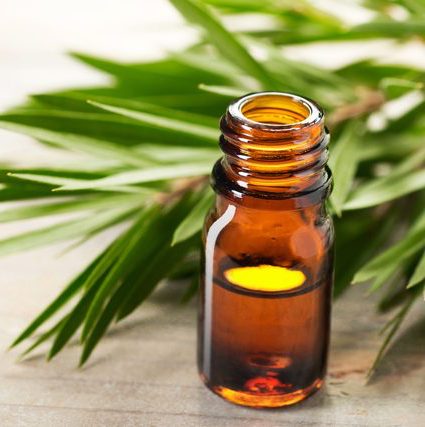Hand sanitizer
Make your own hand sanitiser using tea tree oil

To combat the spread of infectious diseases nothing beats good old-fashioned hand washing. But if you’re out and about and soap and water is not available, then your next best option is to use an alcohol-based hand sanitizer.
With the current under-supply of store-bought hand sanitizer, one option is to simply make your own to have on hand.
Is hand sanitizer a good substitute for hand washing?
Washing your hands thoroughly with soap and water is always going to be your best option for preventing the spread of diseases.
But let’s face it – you don’t always have access to soap and a sink when you’re out and about, and usually it’s these times when we need it the most!
Shopping, travelling, changing nappies or doing other public activities – you’re bound to need some hand sanitizer at some point, so if you can’t find it in the store you can simply make it yourself with just three ingredients.
Potential benefits & limitations of tea tree oil in hand sanitizers
While tea tree oil offers promising antimicrobial activity, it should be understood as a supplementary ingredient, not a standalone substitute for alcohol or other proven disinfectants. Some laboratory studies have shown that compounds in tea tree oil—such as terpinen-4-ol—can inhibit growth of certain bacteria and fungi.
However, the concentration and contact time matters a great deal. In a homemade sanitizer, the alcohol (or another strong disinfectant) remains the primary germ-killing agent, while tea tree oil may lend some additional benefit (and a natural scent) rather than full protection on its own.
Here’s what you need to make your own hand sanitizer using tea tree oil:-
Hand sanitizer recipe
Ingredients:
- ¾ cup of rubbing alcohol eg. isopropyl (must be 99%)
- ¼ cup aloe vera gel
- 10 drops of tea tree oil (or you can use lavender oil if you wish)
Method:
- Combine all ingredients into a bowl.
- Mix with a spoon, then beat using a whisk until it turns into a gel.
- Using a funnel, pour into an empty, clean bottle.
Make sure you label it ‘hand sanitizer’ and store out of reach of young children and pets.
Tips for making tea tree oil hand sanitizer at home
- Make your hand sanitizer in a clean space – wipe down the countertop or kitchen bench before you start.
- Make sure you have thoroughly washed your hands with soap and water before you begin.
- Ensure you use clean utensils for mixing and whisking.
- Don’t touch the mixture with your hands until it’s ready to use.
How to use hand sanitizer effectively
First of all, you need to rub it into your skin until your hands are completely dry.
Spray or apply the sanitizer to the palm of one hand.
Rub hands together thoroughly, making sure you cover the entire surface of your hands and all fingers.
Continue to rub for 30-60 seconds or until hands are dry. It usually takes at least 60 seconds for hand sanitizer to kill most germs, so make sure you apply properly.
Safety precautions & skin sensitivity
Because tea tree oil is a potent essential oil, it should always be used with caution when applying to skin — even in diluted form. Before using a homemade hand sanitizer that includes tea tree oil, it’s wise to perform a patch test: dab a tiny amount on a small patch of skin (e.g. inner forearm) and wait 24 hours to check for redness, itching, or burning. If any irritation occurs, discontinue use.
Read more about the potential side effects of tea tree oil >>
Also, essential oils can degrade over time, especially with exposure to heat, light, or air. To preserve efficacy, store your homemade hand sanitizer in a dark, airtight container and keep it out of direct sunlight or heat. Label the bottle with the date made, and aim to use it within a few weeks to a few months (depending on shelf-life of your raw ingredients).
When hand sanitizer isn’t enough
It’s important to emphasise that hand sanitizers—even well-formulated ones—cannot replace proper handwashing with soap and water, especially when hands are visibly dirty, greasy, or after certain exposures (e.g. after using the bathroom or handling raw food). Soap helps to physically lift off oils, grime, and microbes, while hand sanitizers act by chemical inactivation.
Furthermore, hand sanitizers do not eliminate all types of germs equally well (for example, they are less effective against certain spores or non-enveloped viruses). Therefore, use them as a convenient supplement when you’re on the go—but not as a complete substitute for good hygiene practices.
Disclaimer
The content on this website is not intended to be a substitute for professional medical advice, diagnosis, or treatment. Always seek medical advice for any questions regarding a medical condition.

